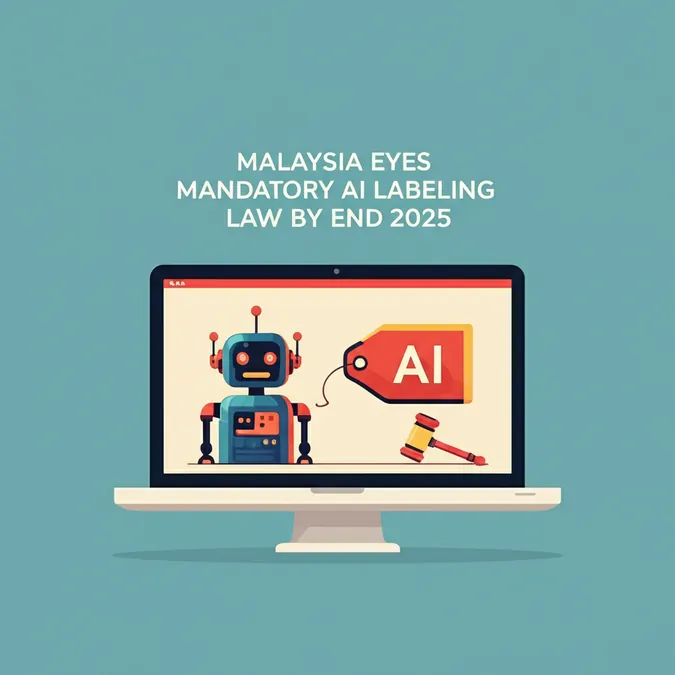Developer Offer
Try ImaginePro API with 50 Free Credits
Build and ship AI-powered visuals with Midjourney, Flux, and more — free credits refresh every month.
How Technology Is Reshaping Our Idea of Beauty
The Unsettling Rise of Snapchat Dysmorphia
Have you heard of "Snapchat dysmorphia"? Artist Qualeasha Wood explains it as a phenomenon first noticed by plastic surgeons in the mid-2010s. People began bringing in their AI-filtered selfies, not celebrity photos, as their surgical goal. They wanted to remodel their real faces to match the idealized, AI-perfected versions of themselves from their phone screens.
However, this pursuit of two-dimensional perfection has a fundamental flaw. Adam Lowe of the Factum Foundation, a leader in art and technology, notes that translating a flat-screen ideal onto a three-dimensional human face can produce bizarre and unsettling results. He expresses a deep sadness for how this chase for screen-based perfection often botches the very idea of human beauty, saying, "I have to look away."
Art as a Mirror to Our Digital Selves
These modern paradoxes are at the heart of the Virtual Beauty exhibition at London's Somerset House. Featuring over 20 international artists, the show delves into how AI, social media, and virtual identities are reshaping our perceptions of beauty and self. For Qualeasha Wood, a featured artist, this digital mediation is second nature. "I was born in 1996 so the internet was already there," she says. "My whole life has been mediated through that."
Wood’s art captures the chaotic nature of online existence, blending her selfies with a constant stream of texts, emails, and overlapping screen windows. Yet, she gives this digital restlessness a surprising twist by rendering these montages as large-scale tapestries. This traditional medium, with its own history of digital programming via the 200-year-old Jacquard loom, brings a contemplative quality to the harshness of online life and abusive messages.
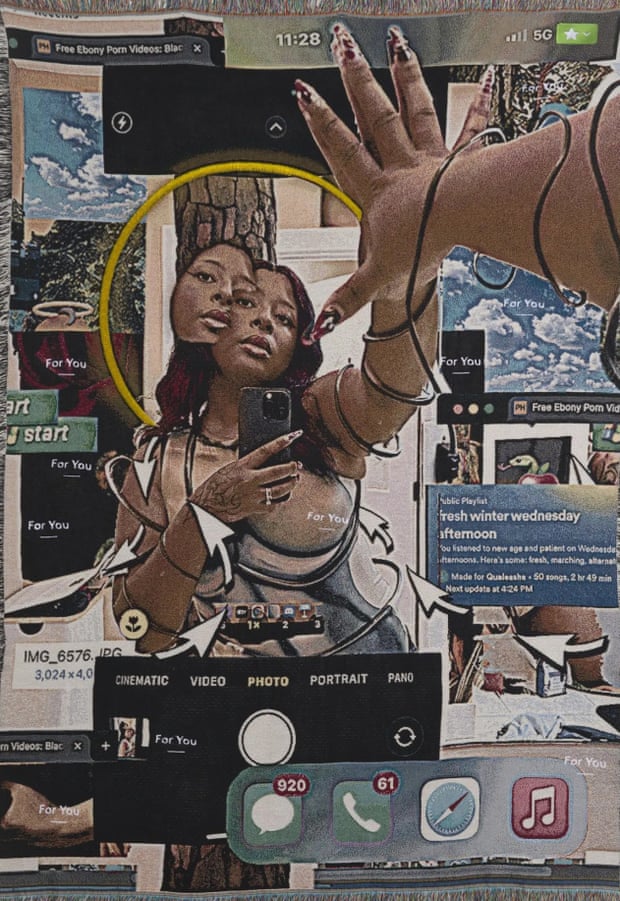 On reflection … All for U (If U Rlly Want It) by Qualeasha Wood. Photograph: Qualeasha Wood/ Pippy Houldsworth Gallery
On reflection … All for U (If U Rlly Want It) by Qualeasha Wood. Photograph: Qualeasha Wood/ Pippy Houldsworth Gallery
The New Face of Beauty Standards
Wood points to figures like Kim Kardashian, whose 2015 selfie book Selfish helped create the template for the now-dominant "Instagram face." This aesthetic, famously described as a "sexy baby tiger," pressures people to conform their physical appearance to a digital ideal. "So much of beauty now isn’t about how you see yourself," Wood remarks. "We look instead at likes and metrics, and how much attention we are receiving."
Through her art, Wood pushes back, showing how online visibility can be a harsh glare. By including aggressive online messages alongside her own image, she reclaims her narrative. She insists that true beauty isn't about becoming an AI-generated product. "I refuse to contribute to the beauty standard," she says, noting that the works where she feels "least put together" are often the ones viewers find most beautiful.
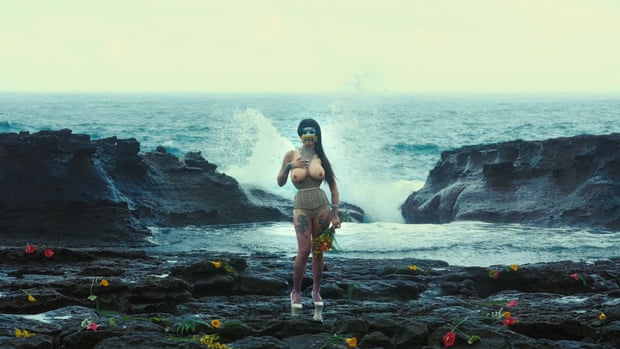 Making a splash … A Dream of Wholeness in Parts (still) by Sin Wai Kin (2021). Photograph: Sin Wai Kin/Chi-Wen Gallery, Taipei and Soft Opening, London
Making a splash … A Dream of Wholeness in Parts (still) by Sin Wai Kin (2021). Photograph: Sin Wai Kin/Chi-Wen Gallery, Taipei and Soft Opening, London
Reimagining Classic Ideals in a Modern World
Another powerful piece in the exhibition deconstructs one of art history's most iconic images. Non-binary transgender artist Sin Wai Kin recreates Botticelli’s The Birth of Venus in a film. In the climactic scene, the artist appears in Venus's famous pose—in nude drag and white high heels—against a backdrop of crashing waves. The piece challenges the very notion of an "ideal of beauty."
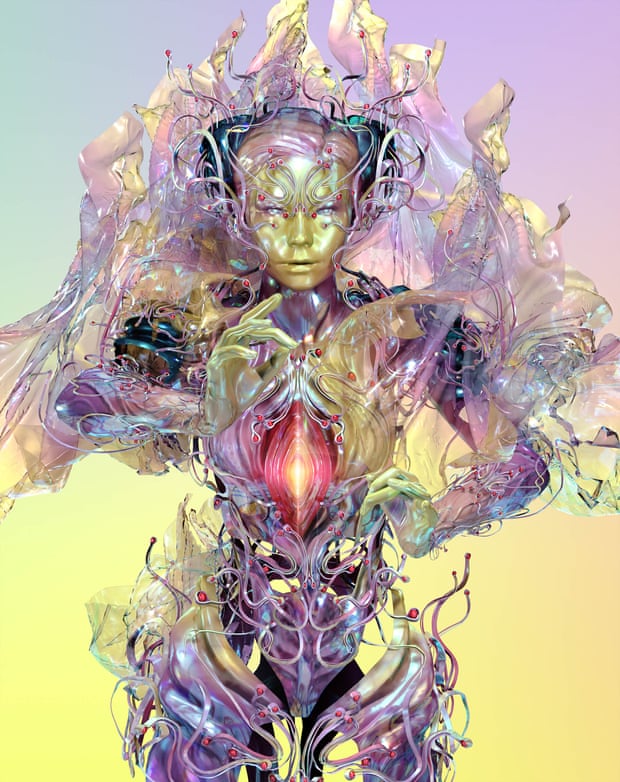 Human in parts … Björk Virtual Avatars by Andrew Thomas Huang and James Merry (2017). Photograph: Andrew Thomas Huang/James Merry
Human in parts … Björk Virtual Avatars by Andrew Thomas Huang and James Merry (2017). Photograph: Andrew Thomas Huang/James Merry
Interestingly, Botticelli’s original Venus was also, in a sense, virtual. She is suspended forever in a moment of arrival, never quite real and never touching the shore. In our time, however, we are actively trying to cross that boundary, physically resculpting ourselves to match digital illusions.
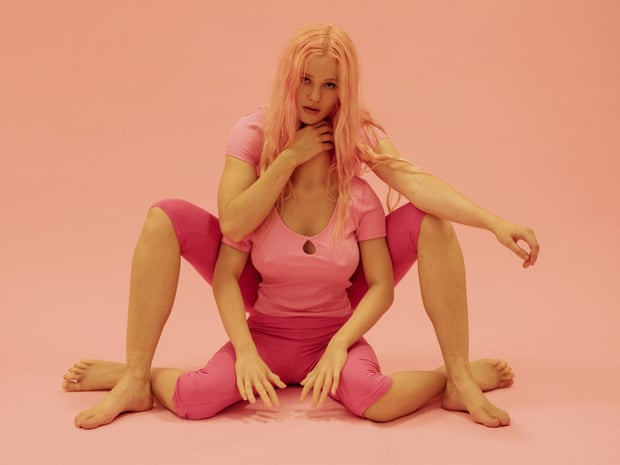 Out on a limb … Coexist by Arvida Byström (2022). Photograph: Arvida Byström
Out on a limb … Coexist by Arvida Byström (2022). Photograph: Arvida Byström
From Performance Art to Cyborg Theory
The exhibition traces this impulse back to pioneers like French artist Orlan, who used cosmetic surgery as performance art in the 1990s. Today, artists like Filip Ćustić continue this exploration with sculptures where the human form and the screen become one. His work pi(x)el features a silicone figure whose face is covered in phone screens displaying a flow of other faces and bodies.
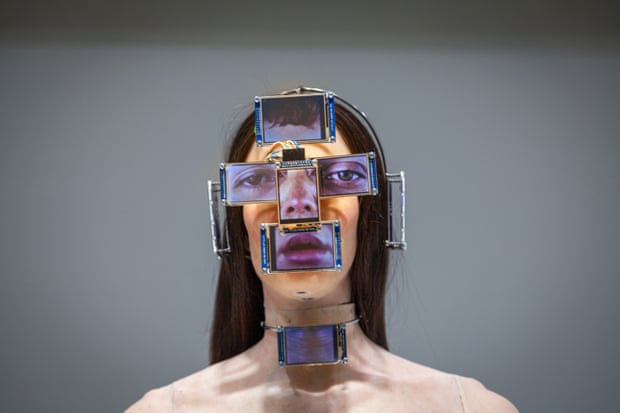 Redeeming features … pi(x)el by Filip Ćustić (2022). Photograph: Onkaos
Redeeming features … pi(x)el by Filip Ćustić (2022). Photograph: Onkaos
This fusion of biology and technology evokes Donna Haraway's 1985 "A Cyborg Manifesto," which imagined a future where we are all part human, part machine, liberated from old structures. The optimistic view is that we are freely reinventing ourselves. The stumbling block, however, is that this cyborg dream may already be outdated. As our bodies merge with machines, our minds may be on the verge of being outdone by them.
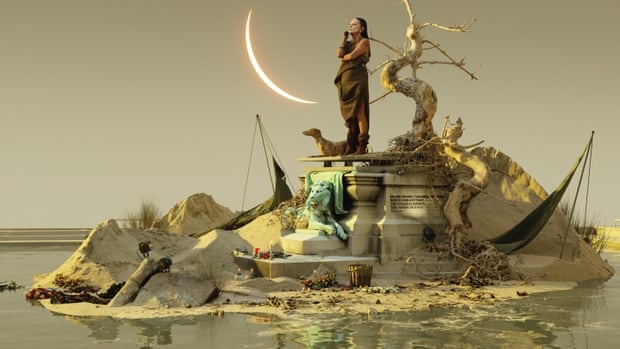 No person is an island … Virtual Embalming, Michèle Lamy by Frederik Heyman (2018). Photograph: Frederik Heyman
No person is an island … Virtual Embalming, Michèle Lamy by Frederik Heyman (2018). Photograph: Frederik Heyman
Beyond Human: AI, Art, and an Uncertain Future
Digital artist Mat Collishaw offers a less human-centric perspective. "You get the sense that some kind of sentience is being nursed into life – but it’s happening away from us," he says. Collishaw, who works closely with OpenAI, echoes warnings from AI leaders like Demis Hassabis that artificial general intelligence could soon surpass human intellect.
In his film Aftermaths, Collishaw uses AI to imagine life re-evolving after humanity's end. This work was unveiled at his exhibition Move 37—a title referencing the famously creative move an AI made to defeat a human Go master in 2016. Collishaw feels a mysterious, unnameable presence growing within AI systems.
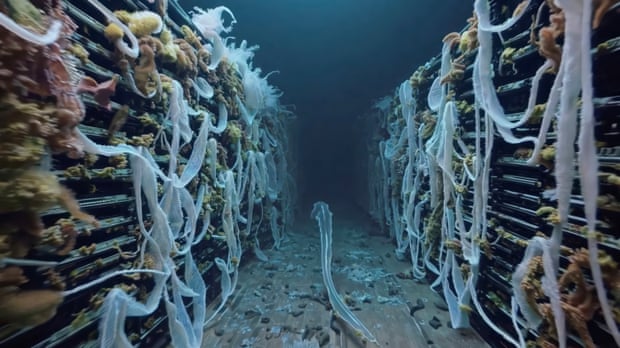 Immersive vision … Aftermaths 9 by Mat Collishaw (2025). Photograph: Mat Collishaw
Immersive vision … Aftermaths 9 by Mat Collishaw (2025). Photograph: Mat Collishaw
So, is this new world a digital heaven or a virtual horror? We are all seduced by the sleek beauty of our devices and the vivid images they deliver. The Virtual Beauty exhibition suggests a future where we might become hedonistic wastrels, endlessly resculpting ourselves to achieve a perfect, AI-curated beauty. Perhaps, in a world run by thinking machines, it will at least give us something to do.
Explore these ideas further at the Virtual Beauty exhibition, showing at Somerset House, London, from July 23 to September 28.
Compare Plans & Pricing
Find the plan that matches your workload and unlock full access to ImaginePro.
| Plan | Price | Highlights |
|---|---|---|
| Standard | $8 / month |
|
| Premium | $20 / month |
|
Need custom terms? Talk to us to tailor credits, rate limits, or deployment options.
View All Pricing Details